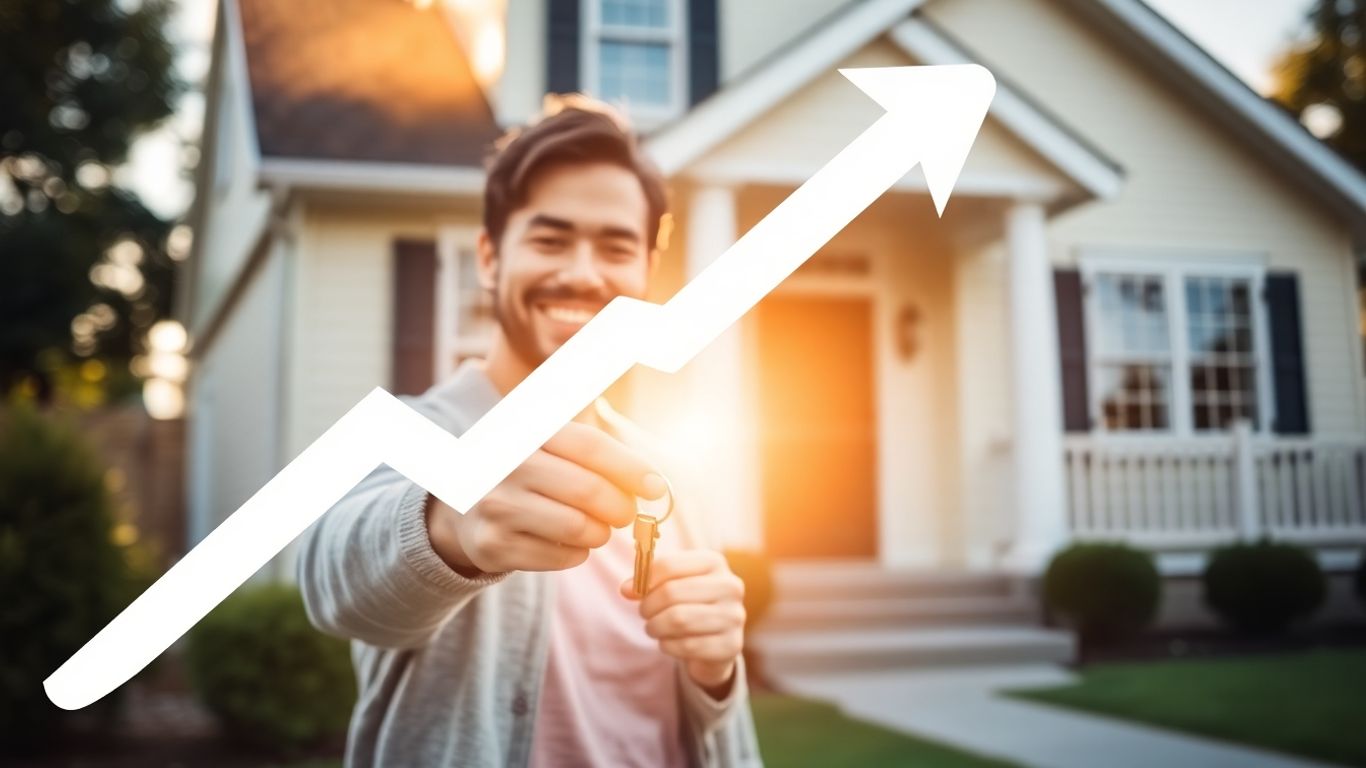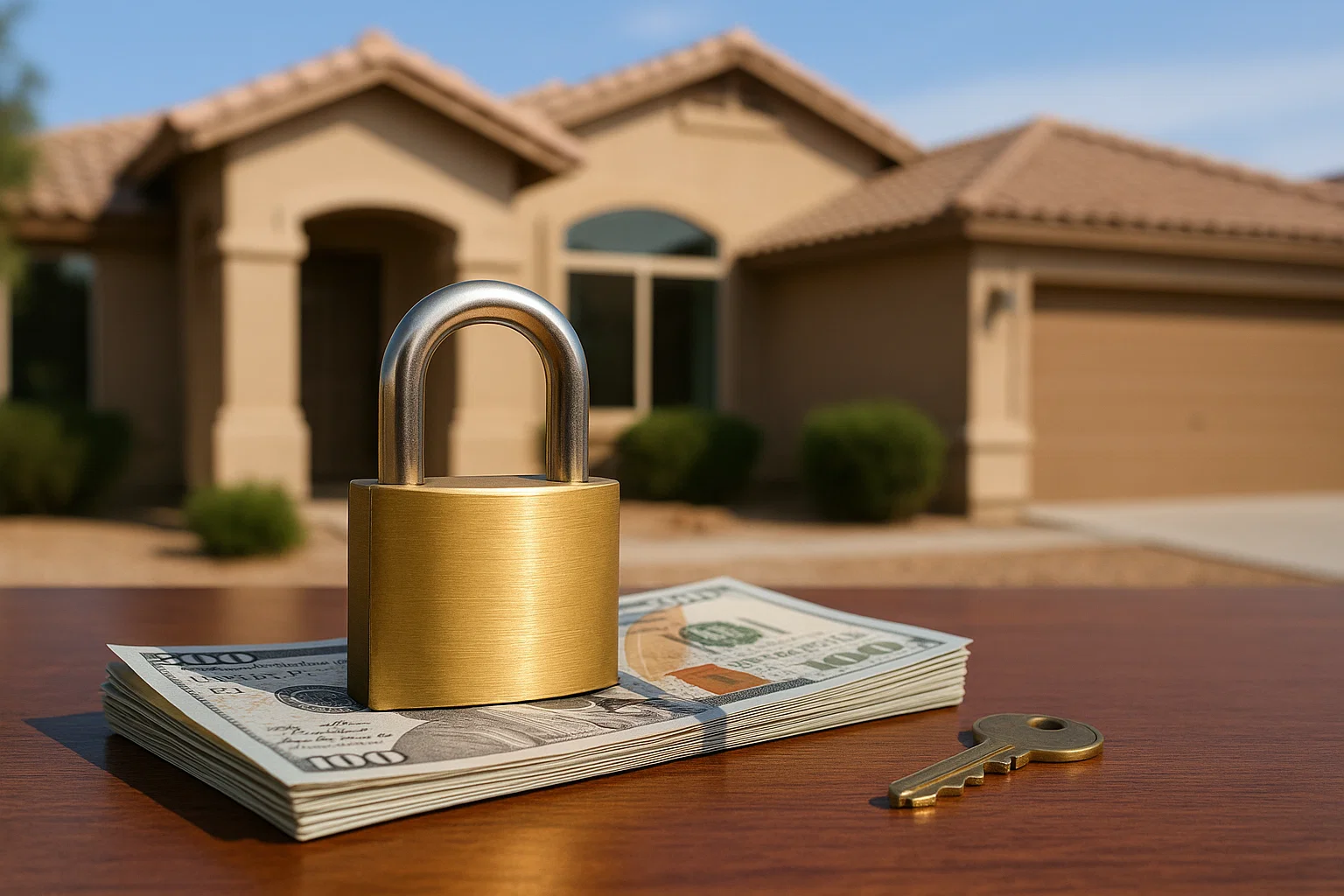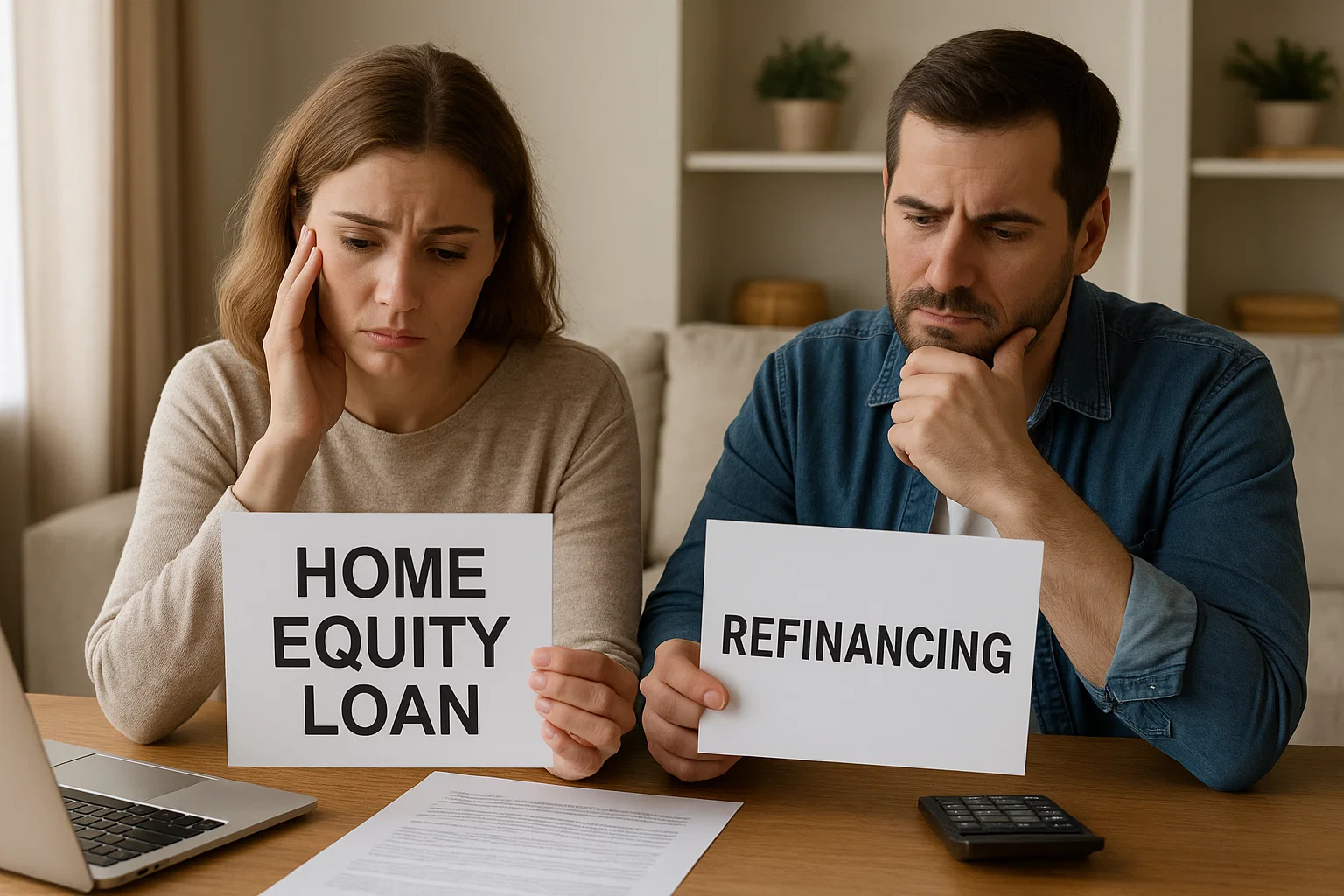Unlock Savings: Understanding How Soon You Can Refinance a Mortgage
November 19, 2025
Wondering how soon can you refinance a mortgage? Learn about refinancing timelines for conventional, FHA, VA, and cash-out loans.

Thinking about refinancing your mortgage? It's a smart move for saving money, but a big question is always, how soon can you refinance a mortgage after you've closed on the original one? The answer isn't a simple 'anytime.' It really depends on your loan type, what your lender says, and the specific kind of refinance you're looking for. Let's break down the timelines so you can figure out the best time to make a change.
Key Takeaways
- Most conventional loans require you to wait at least six months after closing before you can refinance, though some lenders might let you do it sooner, especially if you switch lenders.
- Government-backed loans like FHA and VA have specific waiting periods; FHA Streamline Refinances and VA IRRRLs typically need about 210 days plus six on-time payments.
- For a cash-out refinance, you generally need to have lived in the home as your primary residence for at least 12 months.
- Before refinancing, calculate your break-even point to see how long it will take for your monthly savings to cover the closing costs.
- Your credit score, equity in your home, and overall financial stability play a big role in whether you'll qualify for a refinance and what terms you'll get.
Understanding Refinancing Timelines
So, you've got a mortgage, and you're thinking about refinancing. Maybe you heard about lower interest rates, or perhaps you need some cash. It's a smart move to think about when you can actually do it. The timing isn't always immediate and depends on a few things.
General Refinancing Eligibility
When you can refinance really boils down to your loan type and the rules your lender follows. Think of it like a waiting period, sometimes called a 'seasoning period.' This is basically the time your lender wants to see you making payments on your current loan before they'll consider giving you a new one. It helps them feel more comfortable that you're a reliable borrower.
- Payment History: Lenders want to see you've been making your payments on time.
- Loan Type: Different kinds of loans have different rules.
- Lender Policies: Each bank or mortgage company has its own specific requirements.
It's not just about when you can refinance, but also when it makes financial sense. You'll want to look at closing costs and how long it will take for your monthly savings to add up to more than what you paid to refinance.
The Importance of Loan Type in Refinancing
This is a big one. The kind of mortgage you have plays a huge role in how soon you can refinance. Government-backed loans, like those from the FHA or VA, often have specific waiting periods built into their programs. Conventional loans, on the other hand, can sometimes be more flexible, but it really depends on the lender.
Lender Policies and Seasoning Periods
Even within the same loan type, different lenders can have different rules. Some might be okay with you refinancing after just a few months, while others might want you to wait six months or even a year. This 'seasoning period' is their way of getting comfortable with your loan history. It's always a good idea to ask your potential new lender directly about their specific seasoning requirements for your loan type.
Refinancing Conventional Loans
When it comes to conventional mortgages, you generally have a good amount of flexibility regarding when you can refinance. Many lenders don't impose a strict waiting period, meaning you could potentially refinance shortly after closing on your original loan. The main idea is that refinancing should offer some kind of benefit, like a lower interest rate or a better loan term. It's not just about changing the loan; it's about making a smart financial move.
Minimum Waiting Period for Conventional Mortgages
While some lenders are quite open to immediate refinancing, others might want to see a little history with your current loan. This is often called a "seasoning period." It's usually pretty short, maybe 30 to 90 days. They just want to make sure everything is running smoothly with your payments before they approve a new loan. It's a way for them to check that the loan is performing as expected. The key is demonstrating a tangible benefit to refinancing.
Potential for Immediate Refinancing with New Lenders
It's not uncommon to hear about people refinancing very quickly. If you've found a new lender with a much better rate, and your current lender doesn't offer competitive terms, you might be able to switch pretty fast. This is especially true if you're looking to take advantage of falling interest rates. You can often refinance immediately after closing your original mortgage with a new lender, though some loan types might have a waiting period of six to twelve months. Conventional loans typically allow for the fastest refinancing process [833b].
Lender-Specific Requirements for Conventional Loans
Even though conventional loans are often flexible, it's always a good idea to check with your specific lender. They might have their own internal policies. Some might require you to have made a certain number of payments, or they might look at your loan-to-value ratio. It's also worth noting that if you're looking to do a cash-out refinance, there might be different rules compared to a simple rate-and-term refinance. Always ask about their specific requirements before you get too far into the process.
Refinancing Government-Backed Loans
Government-backed loans, like those from the FHA, VA, and USDA, often come with special refinance options designed to make things simpler. These programs can be a great way to lower your monthly payments or adjust your loan terms, but they do have their own timelines and rules.
FHA Streamline Refinance Requirements
If you have an FHA loan, you might be able to use the FHA Streamline Refinance. This option is pretty popular because it usually doesn't require a new appraisal or a credit check, which can save you time and money. However, you can't use it right away. You generally need to have had your current FHA loan for at least 210 days, and you must have made at least six consecutive on-time payments. The goal here is to show you've been responsible with your payments since getting the loan.
VA Interest Rate Reduction Refinance Loan (IRRRL)
For those with a VA loan, the Interest Rate Reduction Refinance Loan, or IRRRL, is a fantastic way to lower your interest rate. Similar to the FHA Streamline, the IRRRL is designed to be a straightforward process. You'll typically need to wait at least 210 days from your original closing date and have made six consecutive on-time payments on your current VA loan. It's a good move if interest rates have dropped since you first got your mortgage.
USDA Loan Refinancing Guidelines
USDA loans, which help people in rural areas, also have refinancing options. One common path is the USDA Streamline Refinance. Generally, you'll need to have made payments on your current USDA loan for at least 12 months. Some programs might require a full year of on-time payments. It's important to know that USDA loans typically do not offer a cash-out refinance option, so if you're looking to tap into your home's equity, this loan type might not be the best fit for that specific goal.
Refinancing government-backed loans often means sticking to specific programs with their own waiting periods. These aren't usually as flexible as conventional loans when it comes to immediate refinancing, but they can offer significant savings if you meet the criteria.
Here's a quick look at typical timelines:
- FHA Streamline: Minimum 210 days from closing, plus 6 on-time payments.
- VA IRRRL: Minimum 210 days from closing, plus 6 consecutive on-time payments.
- USDA Streamline: Often requires 12 months of payment history, with 6 months of on-time payments.
Keep in mind that these are general guidelines, and your specific lender might have slightly different requirements. Always check with your loan servicer for the most accurate information.
Considering a Cash-Out Refinance
Sometimes, you might want to do more than just swap your current mortgage for a new one with a better rate. A cash-out refinance lets you tap into the equity you've built up in your home. Basically, you get a new, larger mortgage than you currently owe, pay off the old one, and the difference comes to you as cash. People use this for all sorts of things, like home improvements, paying for college, or even consolidating other debts that have higher interest rates.
Primary Residence Occupancy Requirements
If you're thinking about a cash-out refinance, there's usually a rule about how you use your home. Lenders typically want to see that you've lived in the house as your main home for a certain amount of time. Most lenders require you to have occupied the property as your primary residence for at least 12 months before they'll approve a cash-out refinance.
Typical Waiting Period for Cash-Out Options
Beyond just living in the home, there's often a waiting period after you get your current mortgage before you can do a cash-out refinance. This is sometimes called a "seasoning period." While some rate-and-term refinances might be possible sooner with a different lender, cash-out options usually have a longer wait. It's common to need to wait at least 12 months from your original closing date. This gives the lender time to see a payment history and assess the property's value.
Accessing Home Equity Through Refinancing
So, how does this actually work? You're essentially borrowing against the value of your home that you own outright. Let's say your home is worth $400,000 and you owe $200,000 on your mortgage. If you refinance for $250,000, you pay off the $200,000, and you get $50,000 in cash. It's important to remember that this cash isn't free money; you'll be paying interest on it for the life of the new, larger loan. It’s wise to only borrow what you truly need.
- Home Improvements: Fund renovations or upgrades.
- Debt Consolidation: Pay off high-interest credit cards or personal loans.
- Education Costs: Cover tuition or other school expenses.
- Major Purchases: Buy a new car or handle unexpected large expenses.
Taking out cash through a refinance means you'll be paying interest on that amount for years to come. It's a good idea to think carefully about how much you really need and if the long-term interest cost makes sense for your financial situation. Don't just borrow more because it's available.
Key Factors Influencing Refinance Timing

So, you're thinking about refinancing your mortgage. That's great! But when exactly is the right time to pull the trigger? It's not just about watching interest rates drop, though that's a big part of it. Several other things really matter when you're trying to figure out the best moment to refinance.
Assessing the Break-Even Point
Before you even think about signing new paperwork, you've got to do some math. Refinancing isn't free. You'll have closing costs, which can add up to a few percent of your loan amount. Think of it like this: how long will it take for the money you save each month on your new, lower payment to cover those initial costs? That's your break-even point. If you plan to sell your house before you reach that point, refinancing might not be worth it.
- Calculate total closing costs.
- Determine your monthly savings.
- Divide costs by savings to find the break-even period.
Impact of Closing Costs on Refinancing Decisions
Those closing costs we just talked about? They can really throw a wrench in your plans if you're not prepared. They include things like appraisal fees, title insurance, and lender fees. For a typical mortgage, these can range from 2% to 5% of the loan amount. If your goal is to save a little bit each month, but those upfront costs are high, it might take years to actually see any real savings. It's important to get a clear estimate of all these fees before you commit.
It's easy to get caught up in the idea of a lower monthly payment, but don't forget to factor in all the expenses that come with getting a new loan. Sometimes, a slightly smaller monthly saving is better if it means you break even much faster.
Evaluating Your Financial Goals and Stability
What are you trying to achieve by refinancing? Are you looking to lower your monthly payments to free up cash for other things? Maybe you want to shorten the loan term to pay off your house faster. Or perhaps you're interested in a cash-out refinance to tap into your home's equity for renovations or other big expenses. Your personal financial situation and what you want to accomplish with your money are just as important as the interest rates. Lenders will also look at your income, employment history, and credit score to decide if you qualify for a new loan. Making sure your refinance plan lines up with your life goals is key to making it a successful move.
When to Refinance for Optimal Savings

Figuring out the best time to refinance your mortgage isn't just about watching the interest rate ticker. It's a mix of market conditions, your personal finances, and what you actually want to achieve with your loan. Sometimes, even if rates aren't at their absolute lowest, refinancing can still make a lot of sense.
Monitoring Interest Rate Trends
This is probably the most common reason people think about refinancing. If you see that market interest rates have dropped significantly below your current mortgage rate, it's definitely worth looking into. A lower rate can mean lower monthly payments, which is always nice. But don't just jump in the second rates dip. You need to consider the costs involved.
- Watch for significant drops: A small change might not be enough to justify the costs of refinancing.
- Compare your rate: Always compare the new rate to your existing one. If it's lower, you're on the right track.
- Factor in closing costs: These can add up, so make sure the savings outweigh them.
Strategic Reasons for Refinancing
Beyond just chasing a lower rate, there are other smart reasons to consider refinancing. Maybe you want to switch from an adjustable-rate mortgage (ARM) to a fixed-rate loan for more predictable payments, especially if you're worried about rates going up. Or perhaps you have an FHA loan and have built up enough equity (at least 20%) to switch to a conventional loan, potentially getting rid of private mortgage insurance (PMI) and saving money each month. You might also consider shortening your loan term, like going from a 30-year to a 15-year mortgage. Your monthly payment will likely increase, but you'll pay way less interest over the life of the loan and own your home much sooner.
Refinancing is a tool, and like any tool, it works best when you use it for a specific purpose that aligns with your overall financial plan. Just chasing a slightly lower rate without considering the costs or your long-term goals might not be the smartest move.
The Role of Credit Score and Equity
Your credit score and how much equity you have in your home play a big part in whether you'll get approved for a refinance and what kind of rate you'll be offered. If your credit score has improved since you first got your mortgage, you're in a better position to qualify for a lower interest rate. Similarly, if your home's value has gone up, you have more equity. This makes you less of a risk to lenders and can help you secure better terms. For example, if you're looking to do a cash-out refinance, lenders often want to see that you've owned the home for at least 12 months and that its value has increased. Checking your current home equity is a good first step before exploring refinance options.
So, When Can You Actually Refinance?
Figuring out when you can refinance your mortgage really comes down to a few things. It’s not just about waiting for interest rates to drop, though that’s a big part of it for many people. You’ve got to look at your specific loan type – whether it’s conventional, FHA, VA, or something else – because each has its own waiting rules, often called a seasoning period. Plus, lenders have their own policies. It’s also smart to think about your own finances. Have your credit score improved? Is your income stable? And don't forget those closing costs; you want to make sure the savings you get from refinancing will actually make up for those expenses over time. Basically, do your homework, check the rules for your loan, and crunch the numbers to see if it makes sense for your wallet.
Frequently Asked Questions
How soon after buying a house can I refinance?
Generally, you can apply to refinance fairly soon after buying your home. However, most lenders want to see some history of on-time payments. For conventional loans, many lenders prefer you wait at least six months. Government-backed loans like FHA and VA often have specific waiting periods, usually around 210 days, and require a certain number of on-time payments before you can refinance.
Do I always have to wait a certain amount of time to refinance?
Not always, but it's very common. This waiting period, sometimes called a 'seasoning period,' lets lenders see you can make payments reliably. For conventional loans, some lenders might let you refinance sooner, especially if you're using a different lender than your original one. However, government-backed loans usually have set waiting times.
Are the rules the same for all types of mortgages?
No, the rules differ quite a bit! Conventional loans often have fewer restrictions on when you can refinance compared to FHA, VA, or USDA loans. These government-backed loans typically have specific waiting periods and require you to have made a certain number of payments on time before you're eligible for a refinance, especially for their streamlined options.
What is a 'cash-out refinance' and when can I do it?
A cash-out refinance lets you borrow more than you owe on your mortgage and take the difference in cash. This is a great way to use your home's equity for things like home improvements or paying off other debts. Usually, you need to have lived in your home as your main residence for at least 12 months before you can do a cash-out refinance.
How do closing costs affect when I should refinance?
Refinancing comes with closing costs, which can add up to a few percent of your loan amount. You need to figure out your 'break-even point' – how long it will take for your monthly savings to cover these costs. If you plan to move or sell the house soon, the closing costs might mean you won't save enough money to make refinancing worthwhile.
Besides waiting periods, what else should I consider before refinancing?
You should definitely check current interest rates to see if they've dropped enough to make a difference. Also, look at your credit score – a better score usually means a better interest rate. Think about your financial goals: are you trying to lower payments, pay off the loan faster, or get cash out? Make sure refinancing fits into your bigger financial plan.













Get in touch with a loan officer
Our dedicated loan officers are here to guide you through every step of the home buying process, ensuring you find the perfect mortgage solution tailored to your needs.
Options
Exercising Options
Selling
Quarterly estimates
Loans
New home

Stay always updated on insightful articles and guides.
Every Monday, you'll get an article or a guide that will help you be more present, focused and productive in your work and personal life.









.png)
.png)
.png)
.png)
.png)
.png)
.png)
.png)
.png)
.png)
.png)
.png)
.png)
.png)
.png)
.png)
.png)
.png)